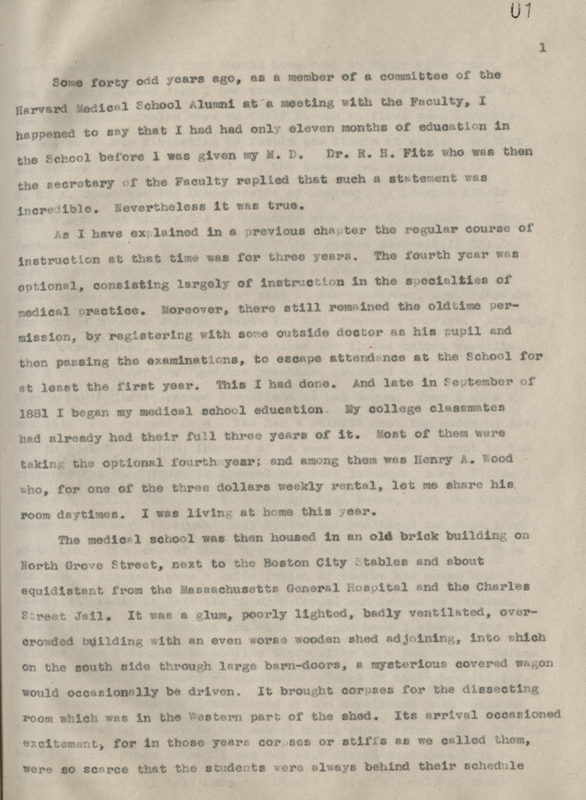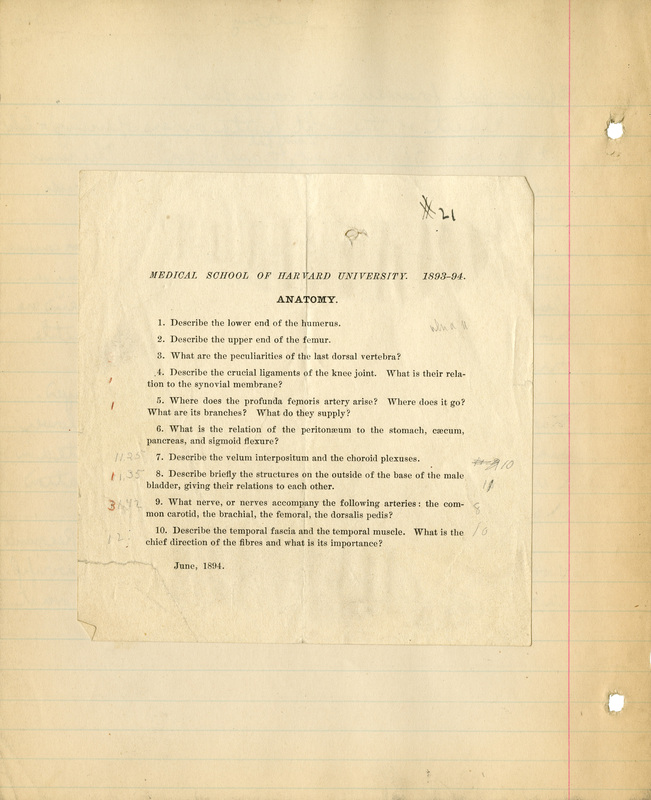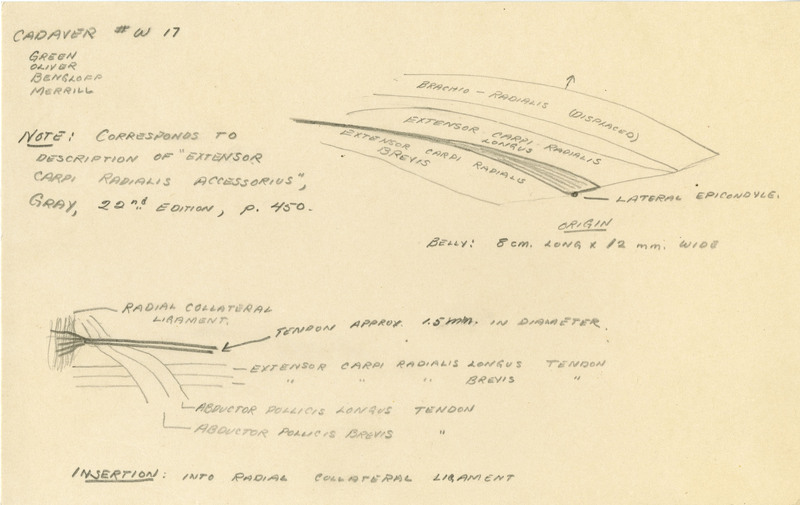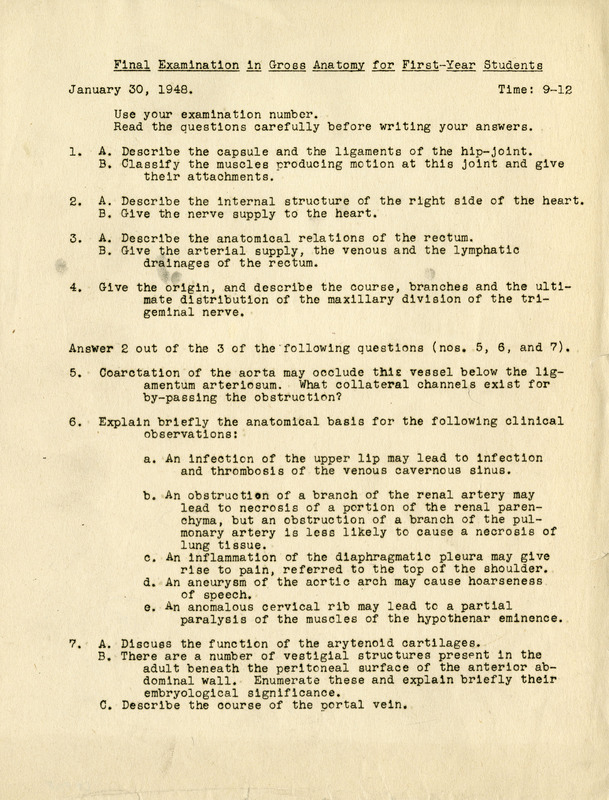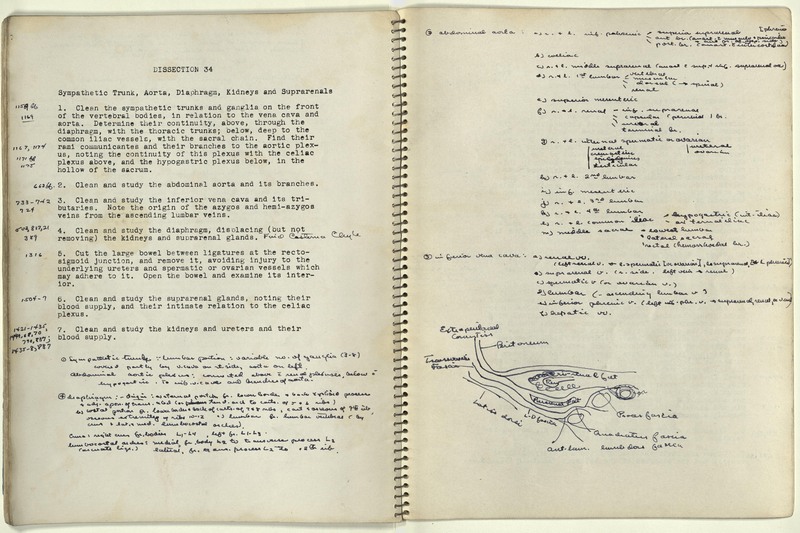Documents
With dissections by Henry Gray, lecturer on anatomy, and H. V. Carter, demonstrator of anatomy at Saint George's Hospital, London, Gray's Anatomy quickly became a standard text for medical students. It first appeared in the U.S. in 1859 and became required reading for first-year students at Harvard as early as 1861. The fortieth edition appeared in 2008, 150 years after its first publication.
This copy of the first edition was in the library of Oliver Wendell Holmes.
At the time of his death, Dr. Alfred Worcester–a member of the Harvard College Class of 1878–was the University's oldest living graduate. He also was an 1883 graduate of the Medical School. In the 1940s, Dr. Worcester composed his autobiographical memoirs, including this chapter on his experiences during the early 1880s. At that period, the required course of study was still only three years, and the school was housed in the "glum, poorly lighted, badly ventilated, over-crowded building" on North Grove Street. The students faced other difficulties too. Dr. Worcester wrote, "In those years corpses or stiffs as we called them, were so scarce that the students were always behind their schedule for dissecting. This they should have done in their first year, but now in their second year I had caught up with some of them. As in the daytime the tables were so fully in use by first year students we had to do our dissecting by feeble gas lights at night. As that was before corpses were embalmed, the stench was terrible."
The Harvard Medical School student in the 1890s attended anatomy lectures four times each week, with additional hours devoted to practical anatomical dissection. Ralph C. Larrabee, who received a medical degree from Harvard in 1897, preserved his notes from his courses in first-year and advanced anatomy as well as his recitation sessions. Displayed are passages related to lectures on the skull as a whole and the nasal cavities by Thomas Dwight; the large teaching skulls made by J. H. Emerton for Thomas Dwight's lectures would have been available at this time. The instructions for the dissecting-room were issued by Franklin Dexter (1857-1927), the Demonstrator of Anatomy.
These are examination questions on descriptive anatomy posed, probably by Thomas Dwight, in June, 1894.
First-year medical students, DeWitt Allen Green, Ernest Bingham Oliver, Harold Bengloff, and Bruce Robinson Merrill, produced these drawings as part of their assigned course work on a cadaver in the fall of 1934.
According to the description in Medical School's catalogue from that year, "In the study of gross anatomy, students make a complete dissection of one half of the human body, and all of the class dissect the same part at the same time. Four men will be assigned to the same subject, and will work together during the course. The study of the skeleton is carried on with the dissection, and each student will be provided with a box of bones which may be kept throughout the course. There will be lectures or demonstrations which are arranged to correspond as closely as possible with the work in the dissecting room. These lectures not only will serve as a guide to the regular work in the dissecting room, but also will be used to emphasize those details of human anatomy which the student cannot easily study for himself in his own dissection."
The Department of Anatomy produced and distributed this step-by-step manual for dissection "to help the student in the important task of displaying for study the structure of the human body. It represents one plan for completing each day's work with a minimum of wasted effort, or of accidental damage to important structures."
This copy was used and heavily annotated by Robert Paul Davis (1929-2005), a graduate of the Class of 1951 during his first-year studies in 1948.


